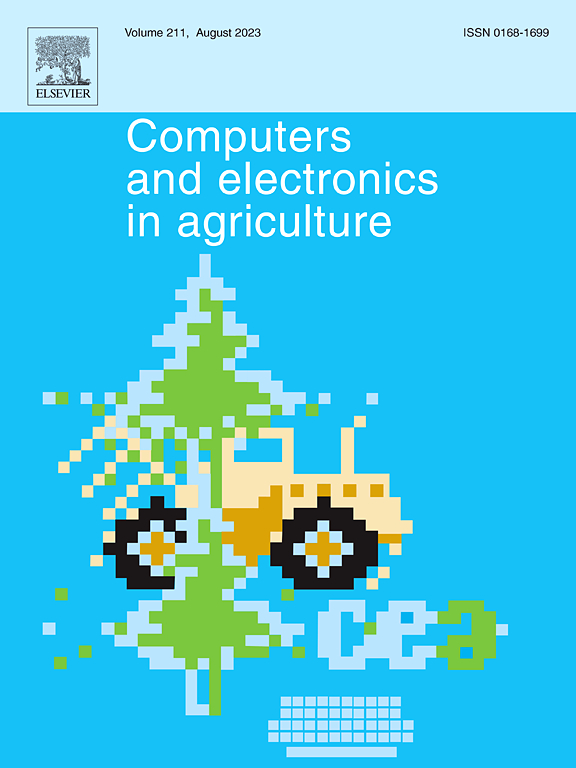Multi-step prediction of dissolved oxygen in fish pond aquaculture using feature reconstruction-based deep neural network
IF 7.7
1区 农林科学
Q1 AGRICULTURE, MULTIDISCIPLINARY
引用次数: 0
Abstract
Dissolved Oxygen (DO) is a pivotal indicator for sustaining the vitality and productivity of aquatic ecosystems. To empower sophisticated aquaculture management, a novel approach of feature reconstruction integrated with deep neural networks was proposed to predict the future DO trends within fish pond aquaculture with exceptional precision and reliability. The time series data of water quality factors including pH, water temperature, conductivity, turbidity, air temperature, and humidity were obtained synchronously by sensing devices. The sequence of Spearman correlation analysis (SCA), variational mode decomposition (VMD), and convolutional neural networks (CNN) formed the feature reconstruction method (SCA-VMD-CNN, SVC) for feature optimization, decomposition, and spatiotemporal feature extraction, addressing the nonlinear and temporal features of DO data in aquaculture. The Long Short-Term Memory (LSTM) and Gated Recurrent Unit (GRU) networks were established based on the SVC features for multi-step predicting of DO. Compared with other state-of-the-art methods, the results showed that SVC effectively improved the accuracy of the DNNs by 16.8 %∼19.5 % for multi-step prediction of future DO trends within fish pond aquaculture. The SVC-BiGRU obtained the highest predictive performances with R2 of 0.962, 0.934, 0.940 for predicting 1-step, 2-step, and 3-step DO content in the next 15, 30, and 45 min. Our proposed methodology paves a pathway toward dynamic monitoring of DO trends, aimed at improving aquaculture efficiency and reducing risks. It may play an essential role in the near future for time-series analysis in precision aquaculture.
求助全文
约1分钟内获得全文
求助全文
来源期刊

Computers and Electronics in Agriculture
工程技术-计算机:跨学科应用
CiteScore
15.30
自引率
14.50%
发文量
800
审稿时长
62 days
期刊介绍:
Computers and Electronics in Agriculture provides international coverage of advancements in computer hardware, software, electronic instrumentation, and control systems applied to agricultural challenges. Encompassing agronomy, horticulture, forestry, aquaculture, and animal farming, the journal publishes original papers, reviews, and applications notes. It explores the use of computers and electronics in plant or animal agricultural production, covering topics like agricultural soils, water, pests, controlled environments, and waste. The scope extends to on-farm post-harvest operations and relevant technologies, including artificial intelligence, sensors, machine vision, robotics, networking, and simulation modeling. Its companion journal, Smart Agricultural Technology, continues the focus on smart applications in production agriculture.
 求助内容:
求助内容: 应助结果提醒方式:
应助结果提醒方式:


